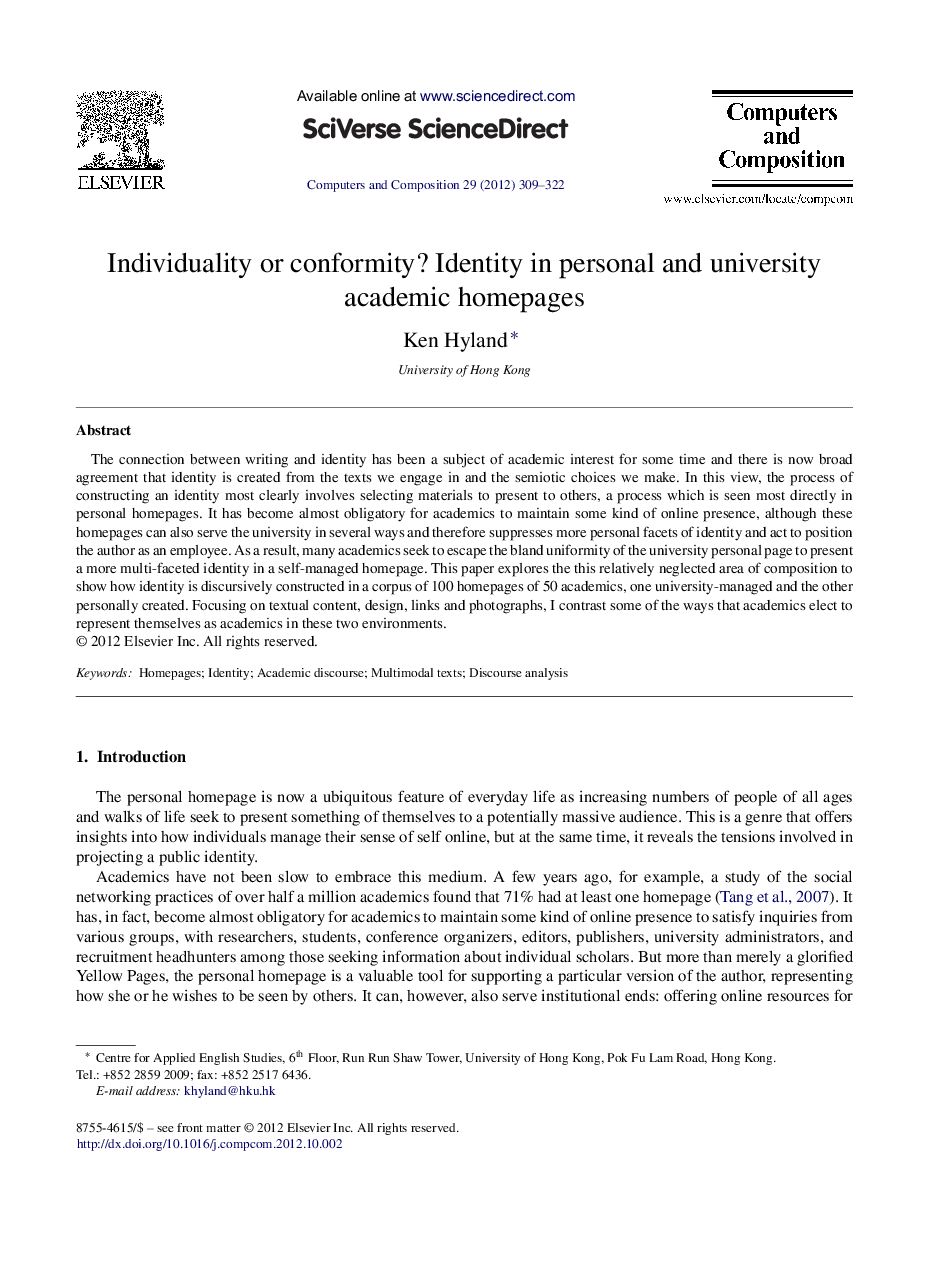| Article ID | Journal | Published Year | Pages | File Type |
|---|---|---|---|---|
| 347998 | Computers and Composition | 2012 | 14 Pages |
The connection between writing and identity has been a subject of academic interest for some time and there is now broad agreement that identity is created from the texts we engage in and the semiotic choices we make. In this view, the process of constructing an identity most clearly involves selecting materials to present to others, a process which is seen most directly in personal homepages. It has become almost obligatory for academics to maintain some kind of online presence, although these homepages can also serve the university in several ways and therefore suppresses more personal facets of identity and act to position the author as an employee. As a result, many academics seek to escape the bland uniformity of the university personal page to present a more multi-faceted identity in a self-managed homepage. This paper explores the this relatively neglected area of composition to show how identity is discursively constructed in a corpus of 100 homepages of 50 academics, one university-managed and the other personally created. Focusing on textual content, design, links and photographs, I contrast some of the ways that academics elect to represent themselves as academics in these two environments.
► University homepages position academics as employees, appropriating their expertise for institutional ends. ► An analysis of the university managed and personally managed homepages of 50 academics indicates how identity is discursively constructed using a range of semiotic resources. ► Findings show that while design features differ, personal pages reveal little individuality and present a purely academic identity. ► Failure to make fuller use of this medium of disclosure to offer a more multi-dimensional identity suggests to viewers that the bland academic presented is all there is.
